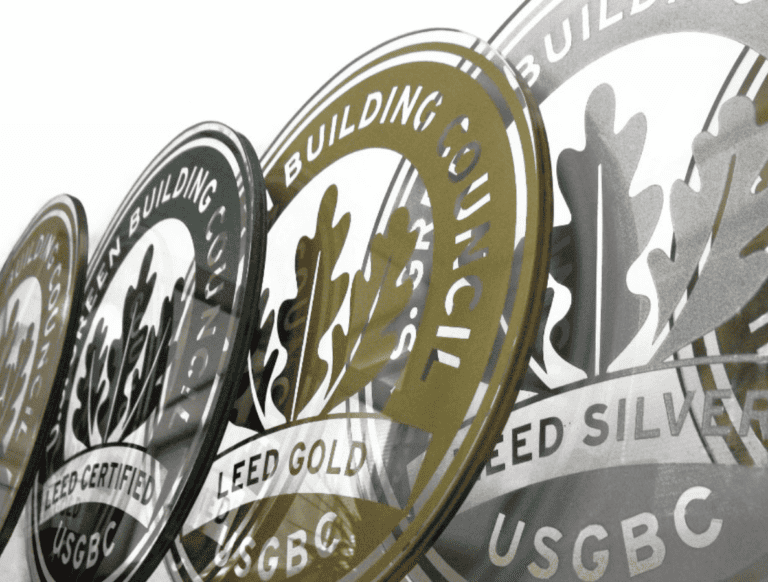Green Building Certifications and Energy Codes: Aligning Standards for Sustainability
By Jane Marsh
The green city concept is a beacon of hope for the next generation. More people are moving to urban spaces, which are known for using the most resources and emitting greenhouse gasses. This is why green building certifications and energy codes are becoming more prevalent and strict. Are companies adhering to them, and are they in a form good enough to change the building sector?
The Current State of Certifications and Codes
These resources have one goal — to reduce carbon emissions and create a happier, healthier planet. Despite this, there is significant resistance, putting these frameworks in jeopardy.
Many states, including Idaho, North Carolina, Iowa, and Missouri, are removing energy code requirements or refusing to update standards. Meanwhile, environmental activists long for revisions so that new buildings can support renewable energy.
Local governments are pushing back, citing it would make housing uncontrollably expensive for populations. However, outdated building codes could result in higher costs over a home’s lifetime because of inefficient technologies and safety concerns.
As codes become stricter, reporting becomes more cumbersome to manage. Businesses are adopting new tech and digitizing everything, increasing their data literacy. Therefore, companies trying to keep up with building codes and certifications also navigate a learning curve.
The Most Important Frameworks
Green codes are available at local, state, and national levels worldwide. What are some of the most well-known and extensive for industry experts and consumers to watch out for?
Leadership in Energy and Environmental Design (LEED)
LEED qualifies commercial and residential buildings based on a point-based system. People seeking certification meet requirements in areas like water conservation, energy efficiency, and indoor environmental quality. It is one of the most well-known and regarded worldwide, as it applies to new, current, and renovated structures.
Building Research Establishment Environmental Assessment Method (BREEAM)
BREEAM started in the United Kingdom and operates similarly to LEED in that it also has categories. They include pollution, health, energy and more. It is becoming accessible in more nations as a valuable science-based validation system for communities of all types.
WELL Building Standard
As the name implies, the WELL standard focuses on health and well-being by tackling concerns like light or noise pollution, water purity and accessibility, or indoor air quality. These are directly related to sustainable development. Because of its complementary nature to other certifications like LEED, there will be more interest in WELL.
Green Globes
This certification system is similar to LEED because it also uses a points-based verification system. It focuses on achieving optimal building performance, but it is more localized to North America and has greater flexibility.
Living Building Challenge
Known as one of the most challenging certifications to acquire, the Living Building Challenge requires structures to have a net-positive environmental impact. Structures achieve this by mimicking natural processes. The certification requires an entire year of observation.
Energy Star Certification
The Energy Star certification from the EPA is a label approving energy-efficient equipment and buildings. Certified buildings are in the top 25% of performers in a given category.
International Energy Conservation Code (IECC)
The IECC outlines the minimum qualifications for energy efficiency worldwide. It is reliable because it updates every three years. It recently increased the U-value of metal building walls based on climate zones, making them stricter. The organization also made air barriers mandatory in 2009, but now requires verification as of 2021.
American Society of Heating, Refrigerating and Air Conditioning (ASHRAE) 90.1
This ASHRAE code applies to U.S. buildings and provides guidance on energy-efficient design, primarily for HVAC and refrigeration systems.
California Title 24
This is an ideal example of the power behind local code, inspiring sustainable new construction and old alike. It has a reputation for being among the most robust and progressive in the U.S. as the state strives to aggressively reduce its greenhouse gas emissions.
National Energy Code of Canada for Buildings (NECB)
The NECB informs Canadian builders how to make new builds the most energy-efficient they can be with diverse designs.
The Expectations for the Future
While these systems are imperfect, they will only get better over time. What changes should everyone, from the average citizen to a professional architect, anticipate?
Green codes and certifications should more profoundly consider climate resilience as severe weather intensifies. For example, hundreds of buildings in Florida are LEED-certified yet remain in flood-prone territory. To protect as many citizens as possible, they must promote the most durable and renewable materials that withstand climate stressors.
They must also focus more on life cycle assessments (LCAs). These tests evaluate all materials, products, and methods used in a structure. The goal is to make builds last as long as possible. While some companies execute LCAs, they are time-consuming and labor-intensive. Government funding and private partnerships are the organizations responsible for making them easier to justify.
Many builders and homeowners avoid obtaining certifications because they are expensive and time-consuming. The future should make this process easier online, using an easy-to-use platform to document enhancements, submit documentation, and pay fees. It should also include video conferencing with auditors in applicable circumstances when hands-on reviews aren’t necessary.
Up to Code
If a building doesn’t have eco-friendly certifications in the future, it will be an outlier. Seeking approval from third parties is slowly becoming the standard because urbanization necessitates it. Industry professionals must act by reaching out to agencies to receive guidance on how to qualify, and consumers can hold corporations accountable until they make it happen.
Article by Jane Marsh
Jane works as an environmental and energy writer. She is also the founder and editor-in-chief of Environment.co
